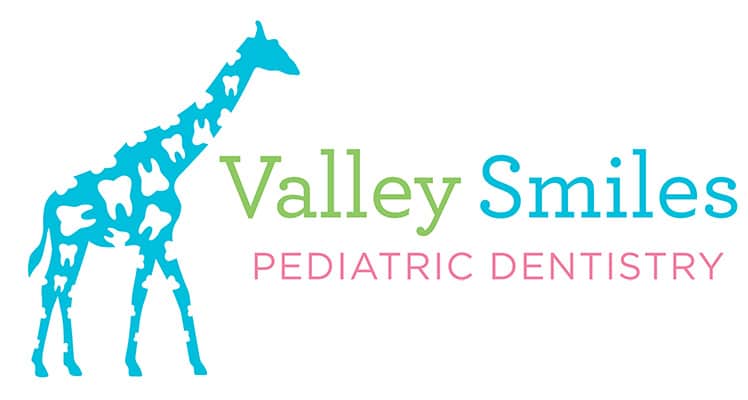5 Early Signs Your Child May Need Braces: A Parent’s Guide

As a parent, you want to ensure your child has every advantage for a healthy and confident life. An essential part of that is establishing excellent oral health from a young age. While regular dental checkups are crucial, it’s also important to be aware of the early indicators that your child may benefit from orthodontic care. Identifying potential issues early on allows for timely intervention, which can simplify treatment and lead to better long-term outcomes. This guide is designed to help you recognize the key signs that suggest it might be time for an orthodontic evaluation.
Observing your child's dental development is a proactive step toward supporting their overall well-being. Early orthodontic treatment can address and correct problems with jaw growth and emerging teeth while the mouth and face are still developing. This often prevents more serious issues from arising later. At Valley Smiles Pediatric Dentistry, we believe in a preventive approach, helping guide your child’s dental alignment to foster a healthy, functional, and beautiful smile for years to come.
Irregular or Crowded Teeth
One of the most apparent signs that your child might need braces is visibly crowded or crooked teeth. As your child’s permanent teeth begin to emerge, you may notice that they appear twisted, overlap, or seem too large for their jaw. Crowding occurs when there is not enough space in the jaw for all the permanent teeth to fit properly. This can also cause teeth to erupt in incorrect positions, sometimes behind or in front of their intended place.
While this may seem like a purely cosmetic concern, crowded teeth can lead to significant oral health challenges. Teeth that are difficult to clean are more susceptible to decay and gum disease because plaque and food particles can become trapped in hard-to-reach areas. Correcting crowding not only improves the appearance of your child's smile but also makes brushing and flossing more effective, contributing to better long-term dental health.
Difficulty Chewing or Biting
Pay close attention to how your child eats. Do they seem to have trouble biting into food or chewing comfortably? You might notice them chewing only on one side of their mouth or complaining that their teeth do not meet correctly. These difficulties can stem from a misalignment of the teeth or jaws, known as malocclusion or a "bad bite." This can include issues like an overbite, underbite, or crossbite.
An improper bite can affect more than just your child's ability to eat. It can lead to uneven wear on their teeth, jaw pain, and even speech difficulties. Addressing these bite problems with early orthodontic treatment can restore proper function, allowing your child to eat with ease and protecting their teeth from abnormal wear and tear. A well-aligned bite is fundamental to a healthy and comfortable mouth.
Early or Late Loss of Baby Teeth
The timing of when your child loses their baby teeth can provide important clues about their future orthodontic needs. Baby teeth typically fall out in a specific sequence, holding space for the permanent teeth that will replace them. If your child loses their baby teeth too early—due to decay or injury—the neighboring teeth may drift into the empty space, blocking the path for the permanent tooth to erupt correctly.
Conversely, if a baby tooth is lost much later than expected, it may signal that the underlying permanent tooth is impacted, out of position, or even missing. Both scenarios can disrupt the natural development of your child's bite and alignment. Monitoring the pattern of tooth loss and consulting with a pediatric dentist can help determine if intervention is needed to guide the permanent teeth into their proper positions.
Protruding Teeth
Teeth that stick out, often referred to as "buck teeth," are another common reason for orthodontic evaluation. Protruding front teeth are not only a cosmetic issue but also a safety concern. These teeth are more vulnerable to being chipped, broken, or knocked out during play, sports, or accidental falls. This condition is often caused by an overbite or may be related to habits like prolonged thumb-sucking or pacifier use.
Early orthodontic treatment can help guide the growth of the jaw and move these teeth into a less precarious position. Correcting protruding teeth reduces the risk of dental trauma and can also have a positive impact on your child's self-esteem. A balanced facial profile and a protected smile are significant benefits of addressing this issue in a timely manner.
Mouth Breathing or Speech Issues
Take note if your child habitually breathes through their mouth instead of their nose, especially when sleeping. Chronic mouth breathing can be linked to the alignment of the jaws and teeth. It may indicate that the jaws are positioned in a way that makes it difficult to close the lips comfortably, or it could be related to narrowed dental arches. This habit can affect facial development and lead to other health issues.
Similarly, certain speech impediments, such as a lisp, can be connected to the position of the teeth and tongue. If your child has difficulty pronouncing certain sounds, it could be due to an open bite or gaps between their teeth. An orthodontic evaluation can help determine if the structure of their mouth is contributing to these challenges. Addressing the underlying alignment issues can often improve both breathing and speech clarity.
The Importance of an Early Evaluation
Recognizing these signs early is the first step toward ensuring your child develops a healthy and functional smile. The American Association of Orthodontists recommends that children have their first orthodontic screening by age seven. At this age, the first permanent molars and incisors have usually come in, allowing a professional to identify potential issues with jaw growth and emerging teeth. Early orthodontic intervention can make treatment simpler and more effective. If you have noticed any of these signs or have other concerns about your child’s dental development, a consultation can provide clarity and a personalized plan for their care.
Frequently Asked Questions About Early Orthodontics
What is the goal of early orthodontic treatment?
The primary goal of early orthodontic treatment, also known as Phase I treatment, is to address significant problems with jaw growth and tooth alignment while the mouth is still developing. Rather than focusing on perfecting the position of every tooth, this phase aims to create a better environment for the permanent teeth to erupt. This can involve using appliances to guide jaw growth, correct harmful oral habits, or make more space for crowded teeth. The objective is to prevent more severe problems from developing, which can simplify or even eliminate the need for more extensive treatment later.
Is my child too young for braces?
While full braces are typically for adolescents and teens, some children benefit greatly from early orthodontic treatment. This initial phase of care is carefully timed to take advantage of a child's growth spurts, making it highly effective for correcting foundational issues with the jaw and bite. Not every child who has an early evaluation will need immediate intervention. In many cases, we will simply monitor your child's development and recommend treatment only when it is the most opportune time. An evaluation will determine the best course of action for your child's unique needs.
At Valley Smiles Pediatric Dentistry, we are honored to provide comprehensive and inclusive oral healthcare for children of all abilities and needs. Establishing good oral health early is essential to lifelong wellness, and our team takes that responsibility seriously. If you have questions about your child’s dental development or wish to schedule an evaluation, please do not hesitate to contact us. We are here to support your family on the path to a lifetime of healthy smiles.
